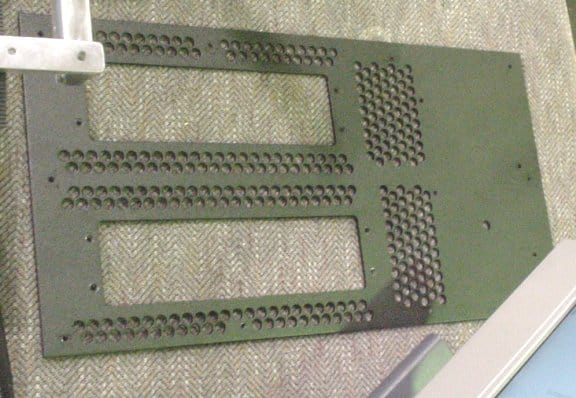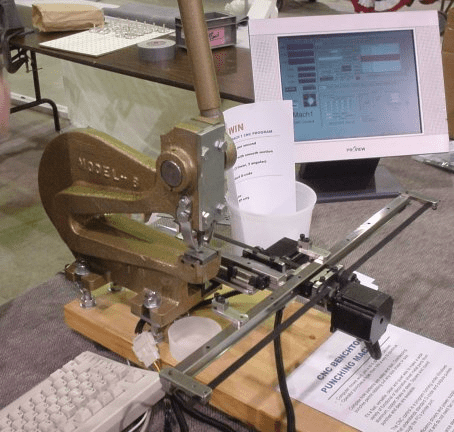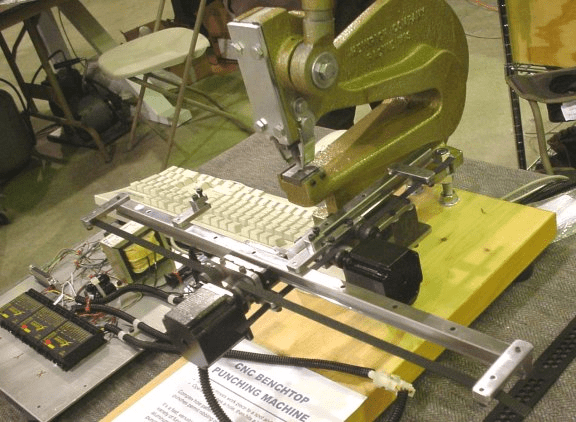Here's an interesting thought. Imagine if you were tasked with creating one of these:

Lots of little cooling holes in the electrical chassis panel...
Sticking in the CNC mill and doing lots of drilling and milling is the first thought that comes to most of our minds. And that's not a bad idea at all. But a piece like this would be much faster to do on a punch press. You're going to tie up that expensive mill on the mundane task of drilling tons of holes. It might or might not be profitable and having a much cheaper machine do it might be a better answer. But it's still daunting-you wouldn't want to do it manually, and you probably don't have a CNC Punch Press in the shop unless you do a lot of that kind of work.
Enter this cute little CNC Punch Press made by a member of the Detroit club (can't find who) and exhibited at NAMES 2003:

Shopmade CNC Punch Press...
Take a little manual punch press and make a "table" for it that is driven by stepper motors and Mach 3 and you have just the tool for the job. Here's another shot of it:

There's also a little thread on CNCZone talking about these things. For a while, a company called Aircastle was making one that looked like it might have been the same guy as made the one I show here. It's no longer listed on their site, though they shoot a neat custom Box Maker that has a cool Conversational CNC interface aimed at custom boxes.
If you were doing a lot of sheetmetal chassis work, a machine like this might be a slick way to get into that business. You'd ultimately buy a more capable machine, but you might get a fair bit done with something like this. My brother works for a company that spends quite a lot of time on their CNC Routers cutting out cardboard for custom boxes. They could probably do with a purpose-built box machine like Aircastle offers too.
I have known a couple of shops that weren't afraid to put together a quick and dirty special-purpose CNC machine. One of the guys swears that if it requires motion control, he can do almost anything with g-code, and he is someone not afraid to build a special-purpose machine like this. Over the years, he's made some good profits with his machines and he also gets a fair bit of work from others who see or hear of the machines and come to him to build a machine for their businesses.
I'm always fascinated by these sorts of automation projects. After seeing this little punch press and a few other projects, I wonder if one could create a generalized XY stage that could be clamped to a variety of manual machines to allow them limited CNC functionality. I know Tormach has a very decent business selling CNC mills that immediately get converted for special-purpose tasks like this.
Be the first to know about updates at CNC Cookbook
Join our newsletter to get updates on what's next at CNC Cookbook.